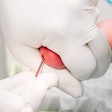
Based on research at the University of California, Los Angeles (UCLA), scientists have developed a prototype sensor that detects lithium levels from sweat on a fingertip in 30 seconds and could eliminate trips to the clinic for some patients.
The sensor has the potential to enable patients to take the right amount of lithium to alleviate the symptoms of bipolar disorder and depression, the scientists said in a presentation at the American Chemical Society (ACS) fall meeting on Sunday.
Measuring levels of lithium can be tricky. Not only must lithium be taken at a certain dosage, but patients often struggle to take it as prescribed and may miss pills.
When the medication doesn't appear to be working, healthcare providers need to know how much medication the patient is swallowing, ACS noted, adding that current options for monitoring have significant drawbacks.
For example, blood draws produce accurate results, but they are invasive and time-consuming; pill counters don't directly measure the intake of the medication.
The new sweat sensor, on the other hand, detects small molecules derived from medication. "Through a single touch, our new device can obtain clinically useful, molecular-level information about what is circulating in the body," Sam Emaminejad, the project's principal investigator and a researcher at UCLA, said in a statement. "We already interact with a lot of touch-based electronics, such as smart phones and keyboards, so this sensor could integrate seamlessly into daily life."
The electrochemical sensor needed the ability to detect charged particles of lithium, which requires an aqueous, or watery, environment. To provide it, the team developed a water-based gel containing glycerol.
The sensor then used an ion-selective electrode to trap the lithium ions after they traversed the gel. The accumulating ions generated a difference in electrical potential compared with a reference electrode that the researchers used to infer the concentration of lithium in sweat.
The sensor is still in preliminary testing; ultimately, the researchers envision incorporating it into a larger system that would provide visual feedback to the provider or the patient, ACS said.
Compared to blood, nasal swabs, tissue, and other types of samples, sweat is rarely used as a basis for in vitro diagnostic testing. However, companies are exploring tests based on sweat.
For example, point-of-care testing firm GBS recently inked a deal to acquire Intelligent Fingerprinting, a developer of point-of-care diagnostic screening technology for opioids and drugs of abuse. The acquisition would enable the combination of Intelligent Fingerprinting's sweat-based drug screening technology with the GBS saliva-based glucose biosensor platform and manufacturing expertise, GBS said.










